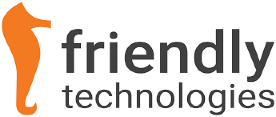
A Conversation with Sean van der Walt
By:
OMA
|
2025-October-10
Welcome to the first in our series of OMA member spotlights, where we dig into the challenges our member companies are facing in the marketplace today and how OMA technologies and membership in OMA help drive strategic initiatives important to them. In our first interview, Seth Newberry, General Manager of OMA chats with long-time OMA member Friendly Technologies’ SVP of Global IoT Business, Sean van der Walt.
Friendly Technologies has walked the path of IoT innovation and open standards since its earliest days. In this interview, Sean opens up about Friendly’s history, its commitment to OMA, and the future of device management in smart cities, utilities, and beyond.
Seth: Can you tell us about your company and your role within it?
Sean: Friendly Technologies, founded in 1997, has evolved from telecom pioneers to global leaders in IoT device management, with our One-IoT DM platform and open-source client, driving innovation. We operate worldwide, with offices in Australia, South America, the US, Europe, Ukraine, Indonesia, and India, employing about 160 people, half dedicated to engineering. As SVP of Global IoT Business, I lead product development and engage with key clients to deliver cutting-edge solutions in IoT device management.
Seth: Why did your company decide to become a member of OMA, and what value has OMA membership brought to your business?
Sean: We joined OMA because we develop open standard products—especially in device management—and wanted to be an active participant in shaping those standards. OMA is an open standards body, which fits perfectly with our focus. By getting involved early with OMA-DM and later LwM2M, we’ve been able to influence the specs and make sure our products are fully aligned with industry direction. It let us bring credibility to what we build and work closely with the consortia driving some of the most critical advances in device management for broadband, utilities, smart cities, and more. The relationships and visibility we’ve gained are invaluable for pushing our mission forward.
Seth: How has participation in OMA activities or working groups influenced your company’s strategy or product development?
Sean: From the earliest days of OMA-DM, we’ve followed the standards—and as LwM2M was taking shape, Friendly was right there developing one of the very first LwM2M servers, our One-IoT™ DM platform, before the protocol was even ratified in Feb 2017. That meant when Southeast Water, a utility in Australia, approached us soon after the standard came out, we were ready to deliver a full solution.
Friendly took a further step towards investing in developing and contributing this significant investment in an open-source LWM2M client, to the community, and is available on our Github repository. Participating in OMA events lets us benchmark what we build against the best in the business. Australia and New Zealand became early adopters for LwM2M, and Friendly was part of the first major commercial deployments world-wide. That kind of involvement keeps us sharp and helps us shape the roadmap alongside other leaders in the ecosystem.
Seth: In your view, why are OMA specifications like LwM2M important for the utilities, telecommunications, and smart cities sectors?
Sean: For utilities, telecoms, and smart cities, LwM2M is critical—mainly because of its security, efficiency, and flexibility. Take our work with Southeast Water: after a deep review, they chose LwM2M because it was best-suited for digital smart meters with complex operational and energy needs. These meters have to run for years on battery, transmit securely, and connect over NB-IoT.
LwM2M became the backbone that let them do all that—and onboard vendors ranging from startups to big names like Landis+Gyr and EDMI. In telecoms, I saw global operators like Verizon and AT&T begin mandating LwM2M for module certification. That was an inflection point for industry adoption. Across smart cities, it works for everything from multipurpose gateways to energy and e-mobility systems. Its modularity really serves diverse needs across these sectors.
Seth: Can you share a specific example of how your company has implemented OMA specifications such as LwM2M in a real-world project or product?
Sean: Our project with Southeast Water is a great example. We helped them pioneer LwM2M for smart meters, working together to define custom data objects that enabled efficient battery use, daily transmission, and encrypted payloads. Over seven years, we onboarded 12 to 15 smart meter vendors, tested and certified their meters, and supported rollout efforts from Australia, New Zealand and to Europe—for water, heat, and gas applications alike. On the telecom side, LwM2M is now integrated by default into modules from major manufacturers like Quectel, Telit, and Sierra Wireless.
We’ve started seeing traction with industrial customers where dual-stack LwM2M and MQTT gateways support secure updates and credential provisioning, as well as upstream integration into SCADA systems. Traditionally, MQTT doesn’t support a mass provisioning system for secure TLS credentials, where we’ve used the LWM2M Bootstrap for passing secure key credentials to these gateways, so as for them to maintain the highest levels of cyber security, especially in critical infrastructure projects.
We’ve also deployed projects for 5G fixed wireless access (FWA) where LWM2M compliments the traditional device management protocol resident in FWA CPEs for mass rollouts and backed by vendor/factory SLAs. Another standout and rather surprising story is our work on feature phones for emerging markets. One customer manages well over 20 million resource-constrained devices—extremely low-footprint phones—using LwM2M. This would be arguably the largest single LWM2M deployment globally. We combined our R&D expertise to make it scale for firmware updates, app deployments, and efficient use even on networks with high latency. That sort of flexibility and efficiency is what makes LwM2M so valuable for real-world applications and should be further considered for wider application appeal.
Seth: What challenges do you see in the adoption of open standards in your industry, and how does OMA help address them?
Sean: The biggest challenge is awareness and education. Too many engineers and decision-makers haven’t heard of LwM2M or don’t realize how powerful it is. It barely shows up in job specs or market analysis—even though we’re years past its initial release and have lots of proven deployments. People fall back on what they know, whether it’s MQTT, TCP, or homegrown payloads, when LwM2M might fit better. I think OMA’s outreach—like bringing universities onboard for free, opening up to municipalities, and making sure there’s visible marketing at places like the Smart Cities Expo—is essential. If we can get the word out with practical education, technical evangelism, and sharing of learning materials, we’ll see adoption accelerate.
Seth: Looking ahead, what developments or trends in IoT and connectivity are you most excited about, and how do you see OMA contributing to these changes?
Sean: AI is at the forefront right now—it’s changing everything about how devices are provisioned, managed, and optimized. We’re deploying AI-driven applications and working with partners to push microservices and AI applets out to the edge, whether it’s for vision, security, or predictive maintenance. LwM2M is well-suited for this, thanks to its modular firmware and software update framework. As 5G and 6G enable massive sensor networks, LwM2M’s modular framework is ideally positioned.
I’d love to see OMA help us roadmap for these changes, anticipate new requirements, and keep standards relevant—especially as we see smarter cities, more energy resilience, and faster networks coming online.
About Friendly Technologies and One-IoT™ DMP
Friendly Technologies, a global leader in IoT and device management since 1997, empowers utilities, telecoms, and smart cities with its innovative One-IoT™ Device Management Platform (DMP). Trusted by industry giants and major telecom operators, One-IoT™ DMP leverages OMA’s LwM2M standard to deliver secure, scalable, and efficient solutions for smart meter infrastructure, 5G fixed wireless access, smart energy, transportation, and even resource-constrained feature phones. With a robust R&D team and a presence across Oceania, the Americas, Europe, and Asia, Friendly Technologies drives the future of connected ecosystems, ensuring seamless device provisioning, asset data orchestration, security, firmware updates, and AI-driven analytics for a smarter, more resilient world.
Conclusion:
Sean van der Walt’s candor highlights not just Friendly Technologies’ pioneering contributions, but also the ongoing journey of open standards like LwM2M in real-world deployments. OMA’s work is key to addressing challenges and propelling IoT innovation toward a smarter, more connected future for utilities, cities, and beyond.
Could your company benefit from OMA membership? Learn more at https://www.openmobilealliance.org/join

